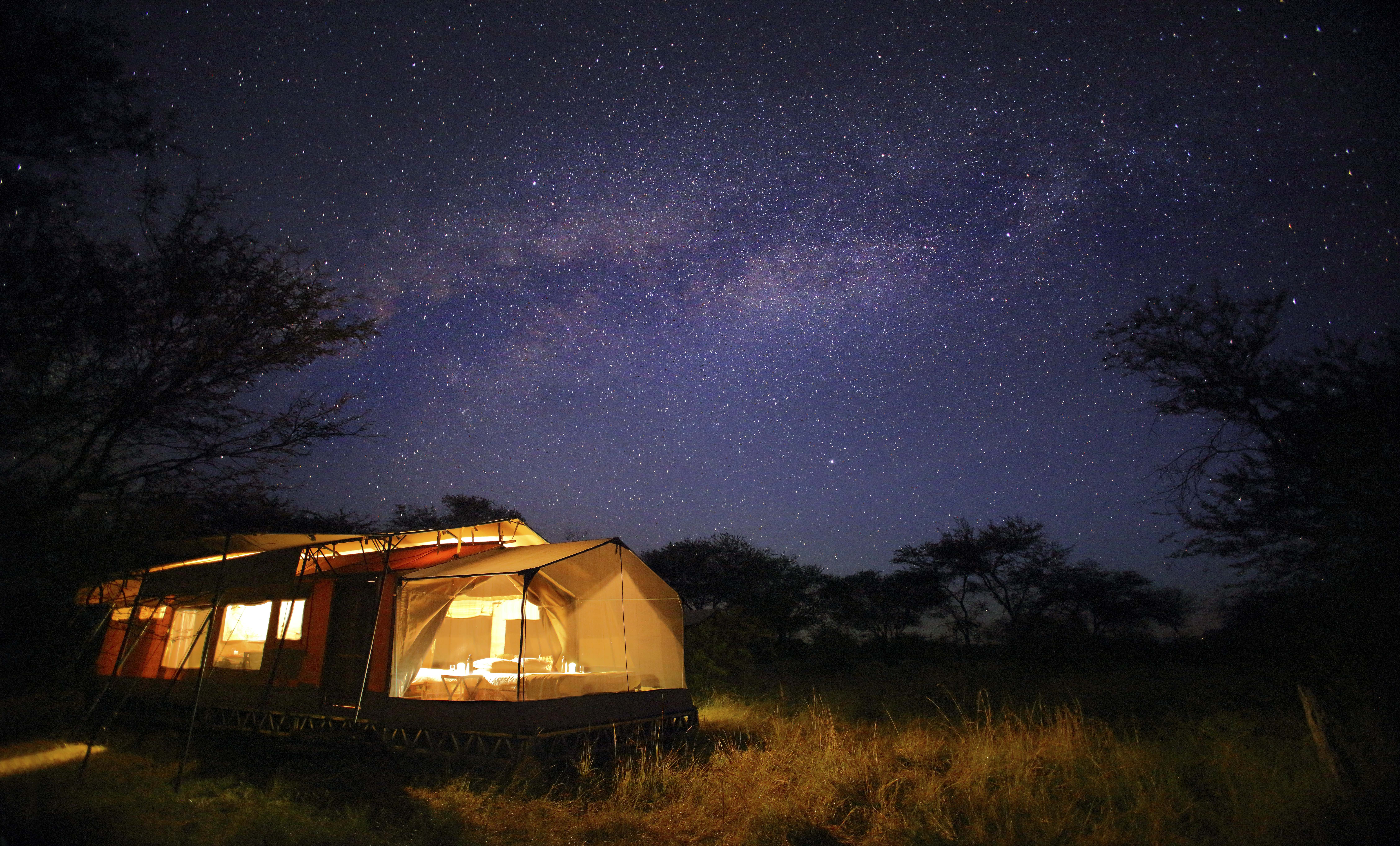East Africa’s Night Sky
The Serengeti National Park is one of the best places to star gaze on the planet. The darkness in these places enables the Milky Way to shine and sparkle in the heavens above, with thousands and millions of twinkling stars in between. Because these places are less polluted with light, the night skies in these areas are phenomenal. The skies come alive every night!

The South Pole points to the galactic centre of the Milky Way, meaning that star gazers will see more bright stars and constellations than in the Northern Hemisphere. These include the Southern Cross and Alpha Centauri; the third brightest star in the night sky and the star system closest to us.
Even if you are a beginner to star gazing, you will have a brilliant opportunity to learn and lookout for dark nebulae in and around Crux, the rich star fields towards the center of our galaxy in the constellation of Sagittarius, home to dozens of nebulae and star clusters. An astonishing star cluster in the constellation Carina, first discovered by John Herschel, two sparkling globular clusters, visible to the unaided eye (and lovely in binoculars), each of which holds hundreds of thousands of stars, and in a small telescope looks like a cracked-open geode filled with gold dust.
You will also have an opportunity to look for two dazzling star clusters in Taurus, a glowing blister of interstellar gas in Carina that’s right now giving birth to hot, silver-blue young stars, including one that is on the verge of ending its short life in a catastrophic supernova explosion and many more such constellations.
The Serengeti night sky also offers views of an odd-looking garbled galaxy, easily seen through binoculars, which may actually be two galaxies: a giant elliptical merging with a flat, dusty spiral.
Murky skies and immaculate Serengeti plains allow the eyes to see circumpolar (situated around or inhabiting one of the earth’s poles) constellations that are exceptional to the Southern Hemisphere. These constellations circle the south celestial pole without ever dipping below the horizon –as their northern counterparts do in their dominion. That’s why they never disappear from view. Other constellations are seasonal and are only visible at certain times of the year.
Next time you visit the Serengeti, make sure you carry along a nice pair of binocs. Here, you will be warmly invited to a “Star-Filled” movie night accompanied with popcorn and milkshakes while you gaze upon the beauty and awe of an East African sky at night.
“All the good stuff is in the southern hemisphere!”
– Bart Bok, former Harvard University astronomer
Star-Gazing Apps
All of our camps have Wi-Fi which means that star-gazing just got that much easier with the help of a number of applications available for download.
Here are a few free apps you should download before joining us on safari:
- Star Walk 2
- SkyView
- Star Chart
- Star Rover
- Sky Wiki
More Experiences Articles

Experience A Slow Safari
26 July 2019By Anwynn Louw – Digital Marketing Assistant The Art of Slow Travel – “Slow T...

BBC One: Serengeti – The Elephant
25 July 2019By Britta Foulis – Content Marketing Manager BBC One’s latest mi...

Four Great Locations For A Family Reunion Safari In East Africa
19 July 2019By Anwynn Louw – Digital Marketing Assistant Planning a multigenerational saf...

BBC One: Serengeti – The Baboon
17 July 2019By Britta Foulis – Content Marketing Manager BBC One‘s latest mi...





